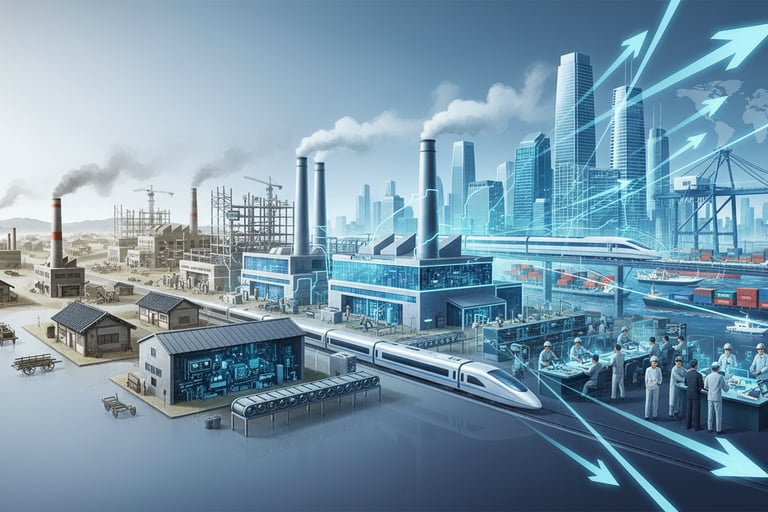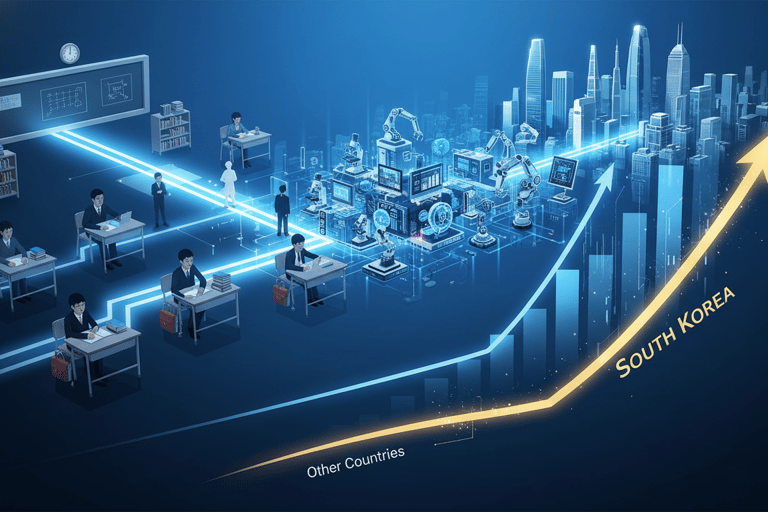South Korea’s Path to Economic Boom
South Korea's economic development trajectory diverged sharply from India's starting in the 1960s, leading to a massive economic boom.
Starting Point and Strategic Shift


In the early 1950s, South Korea had a per capita income comparable to India. However, South Korea rapidly transformed by implementing outward-oriented policies in the early to mid-1960s.


1. Manufacturing and Export-Led Growth: South Korea’s strategy focused on export-oriented industrialization. The manufacturing sector was the sustained engine of growth during its fastest phase of development, aligning with the standard patterns observed by industrially advanced countries. Between 1960 and 2000, South Korea's GDP grew at an average rate of 8.97% per year.


2. The Chaebol Model: South Korea leveraged the chaebol model, characterized by large, family-owned conglomerates (such as Samsung and Hyundai) that were instrumental in its rapid industrialization. The success of these firms was attributed to their ability to achieve economies of scale, invest heavily in research and development (R&D), and foster innovation.


3. Strong Interventionist State: Unlike India’s initial mixed-economy approach with less external support, the South Korean state played a strong, interventionist role in shaping and directing economic growth. The government actively supported key industries and companies through subsidies, tax incentives, and favorable policies. The authoritative state enacted development policies to govern markets and achieve catch-up with advanced countries.


4. Foreign Assistance and Geopolitics: South Korea received substantially higher U.S. aid and foreign investment compared to India. This strategic external support, combined with aid from Japan, helped South Korea support the technological needs required for industrialization.


5. Strategic Investment in Human Capital and Innovation: South Korea made sustained, strategic political commitments and investments in education, eventually helping its economy to soar. South Korea enacted an active learning system focused on developing human resources to absorb and use new technology developed elsewhere. Its R&D intensity (R&D-GDP ratio) crossed the critical 1% threshold in 1983, significantly earlier than India.
The stark difference in trajectories is evident in per capita income: South Korea's per capita income was less than twice India's in 1947, but by 1990, it was 20 times larger.
Connect
Join us in sustainable innovation efforts.
Engage
Support
© Donghaeng-manthan 2025. All rights reserved.
